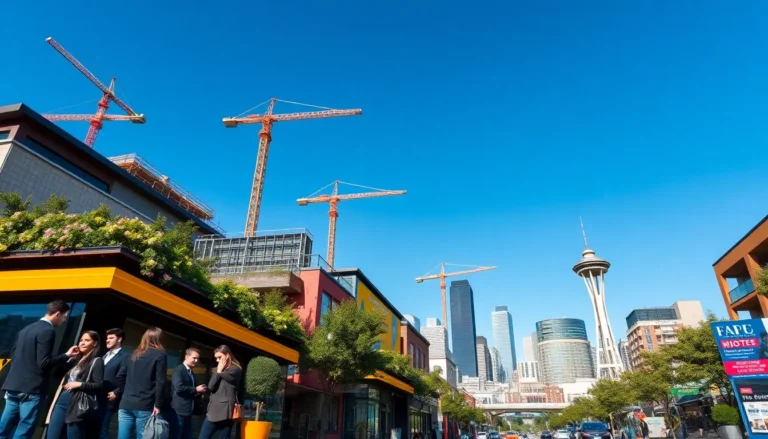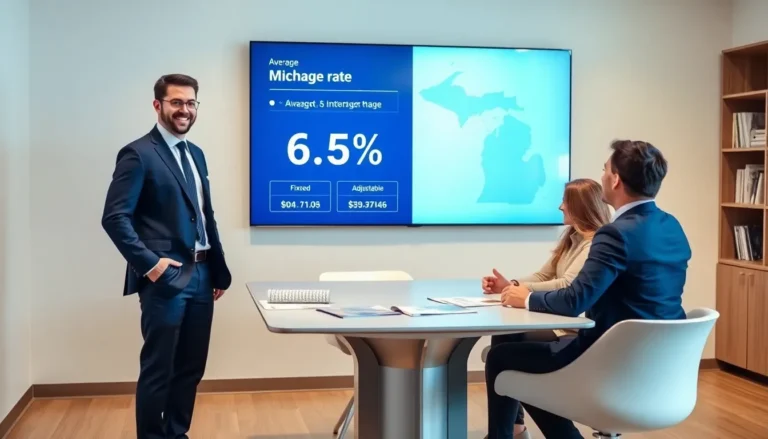In a world where avocado toast can cost more than a down payment, economic housing inequality has become the elephant in the room—or maybe it’s the tiny house in the backyard. While some folks are living the dream in spacious homes, others are crammed into apartments that could double as a walk-in closet. This disparity isn’t just a quirky quirk of modern life; it’s a complex issue that affects families, communities, and even the economy.
As housing prices soar and wages lag behind, the gap between the haves and have-nots widens. It’s time to dig deeper into this pressing issue and understand how it shapes our cities and our lives. Buckle up as we explore the factors fueling this inequality and what can be done to bridge the gap.
Understanding Economic Housing Inequality
Economic housing inequality refers to the disparities in housing conditions based on income, wealth, and access to resources. This inequality manifests through significant gaps between those living in adequate, affordable housing and those struggling with substandard options.
Definition of Economic Housing Inequality
Economic housing inequality represents the uneven distribution of affordable, quality housing across different socioeconomic groups. Families experiencing this issue often find themselves confined to problematic neighborhoods, facing challenges such as limited access to schools and healthcare. Those with higher incomes, conversely, typically enjoy spacious homes in desirable areas. Research by the Urban Institute highlights this divide, noting that low-income households spend up to 50 percent of their income on housing, while affluent families spend considerably less.
Causes of Economic Housing Inequality
Several factors contribute to economic housing inequality. Rising housing costs are a primary concern; as property values surge, low and middle-income families struggle to keep pace. Zoning laws can exacerbate this issue, restricting the development of affordable housing in many areas. Additionally, stagnant wages prevent many from entering the housing market. Discriminatory lending practices also play a role, disproportionately affecting minority communities. According to the Joint Center for Housing Studies, approximately 20 million households face severe housing cost burdens, revealing the urgent need for systemic solutions.
Effects of Economic Housing Inequality
Economic housing inequality significantly affects communities and individuals alike. The disparities in housing conditions create an environment of isolation and hardship for many.
Impact on Communities
Communities with high economic housing inequality often face social fragmentation. Access to quality education and healthcare diminishes where low-income housing prevails. Public infrastructure suffers, and local businesses decline in areas with concentrated poverty. Research shows neighborhoods with limited economic diversity tend to experience higher crime rates. Families and individuals in these neighborhoods often lack social mobility, perpetuating cycles of poverty. Consequently, essential services become strained as local governments struggle to meet the needs of underserved populations.
Consequences for Individuals
Individuals affected by economic housing inequality experience numerous challenges daily. Many face housing cost burdens, which force them to allocate over 50 percent of their income to housing, leaving little for other essentials. Mental health issues frequently arise from chronic financial stress and unstable living conditions. Children in low-income households are more likely to experience educational setbacks, reducing their future opportunities. Employment prospects also suffer, as job seekers in these areas often encounter barriers due to limited transportation options. These collective consequences reinforce the need for urgent reforms to address housing inequality.
Addressing Economic Housing Inequality
Addressing economic housing inequality requires a comprehensive approach that includes targeted policy solutions and grassroots community initiatives. These strategies must work in tandem to create lasting change.
Policy Solutions
Effective policy solutions focus on affordability and accessibility. Implementing rent control measures can protect tenants from excessive price increases. Increasing housing supply through incentives for developers encourages the construction of affordable units. Additionally, revising zoning laws opens up more areas for diverse housing options. Expanding access to affordable financing helps reduce discriminatory lending practices, particularly for minority groups. Integrating affordable housing into urban planning promotes economic diversity within neighborhoods.
Community Initiatives
Community initiatives play a vital role in combating housing inequality. Local organizations often provide resources such as financial education and homebuyer assistance programs. Establishing housing cooperatives allows residents to collectively own and manage properties, creating stability. Supporting community land trusts preserves affordable housing and prevents displacement. Engaging residents in local decision-making enhances awareness of housing issues and promotes solutions tailored to specific needs. Collaborative efforts with local governments can yield significant progress, fostering healthier, more integrated communities.
Case Studies on Economic Housing Inequality
Numerous case studies illustrate the pervasive effects of economic housing inequality across various regions. For instance, in Los Angeles, rising housing costs have led to a significant increase in homelessness. Reports indicate that over 66,000 individuals experience homelessness, highlighting the severe pressures faced by low-income residents.
In contrast, affluent neighborhoods such as Santa Monica boast median home prices exceeding $1.5 million. Discrepancies in housing conditions starkly illustrate the income divide, where wealthier households enjoy spacious homes, while low-income families struggle with substandard living conditions.
Another example can be found in New York City. Approximately 40 percent of the population resides in rent-regulated apartments, yet many low-income families spend more than 50 percent of their income on rent. This financial burden directly impacts their ability to allocate funds for essentials like food and healthcare.
In Chicago, the impact of discriminatory lending practices manifests clearly. Neighborhoods with predominantly minority populations often report higher rates of loan denials compared to predominantly white areas. This discrepancy exacerbates housing inequality and limits access to quality housing.
The research conducted by the Urban Institute emphasizes that economic segregation significantly affects children’s educational outcomes. Students in low-income neighborhoods tend to attend underfunded schools, further perpetuating cycles of poverty and limiting future opportunities.
Community initiatives in cities like Seattle showcase promising solutions. The city has implemented policies aimed at increasing affordable housing stock through measures like inclusionary zoning. By engaging local organizations, residents have worked together to advocate for equitable housing policies, demonstrating the potential for grassroots movements to address economic disparities.
Addressing economic housing inequality is crucial for building healthier communities and fostering social mobility. The disparities in housing conditions not only affect individual families but also have far-reaching impacts on neighborhoods and the overall economy. By implementing targeted policy solutions and supporting grassroots initiatives, it’s possible to create more equitable housing opportunities.
Engaging local residents in decision-making processes can lead to tailored solutions that meet the unique needs of each community. As awareness grows and collective action strengthens, there’s hope for a future where everyone has access to safe and affordable housing, breaking the cycle of inequality and promoting a more inclusive society.






